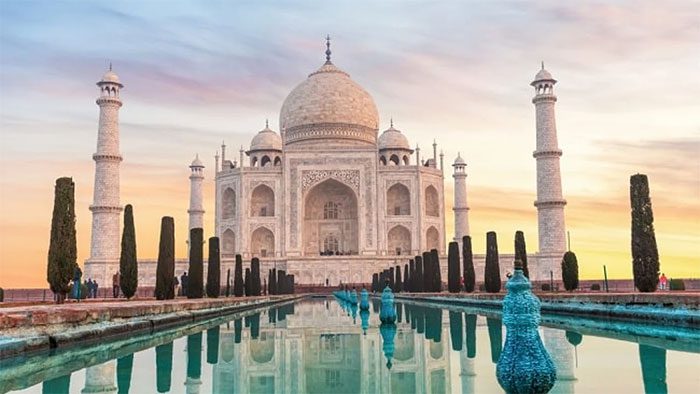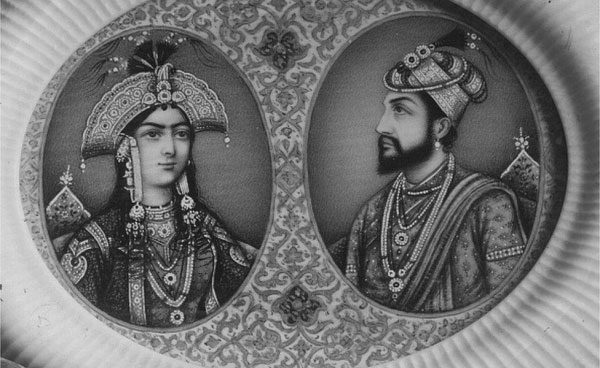Judges from a high court in India have dismissed the petition of Rajneesh Singh, a member of the ruling Bharatiya Janata Party (BJP), who requested the opening of more than 20 “permanently locked rooms” in the Taj Mahal to investigate the “true history of the monument.”
Specifically, Rajneesh Singh told the court that he wanted to verify the hypothesis of historians and Hindu devotees, who believe that these rooms contain a temple dedicated to the god Shiva.

The Taj Mahal is a symbol of India.
The Taj Mahal is essentially a mausoleum built in the 17th century in Agra by Mughal Emperor Shah Jahan in memory of his wife Mumtaz, who died during the birth of their 14th child. This stunning monument is made of brick, red sandstone, and white marble, and is one of India’s major tourist attractions.
However, Singh stated: “We all should know what is behind these rooms.”
Most of the rooms Singh proposed to open are located in the subterranean area of the Taj Mahal. According to many experts, there is nothing special in these rooms.
Professor Ebba Koch, a leading authority on Mughal architecture and author of a study on the Taj, has visited and photographed the rooms and corridors of the monument during her research.
According to Koch, the underground rooms Singh refers to are called tahkhana. They were typically used in the summer and are connected by a corridor that overlooks the river.
Koch noted that this area contains seven rooms with views of the river through large arched doorways. Additionally, there are six square rooms and two octagonal rooms. The rooms are adorned with floral patterns and star motifs arranged around a central medallion.
“This is an airy space, often used by the king and his entourage to rest when visiting the monument,” Professor Koch remarked.
The underground corridors overlooking the river are a characteristic architectural feature of the Mughal dynasty. An example of this architectural style can be found in a Mughal-era fort in Lahore, Pakistan.

Emperor Shah Jahan and Empress Mumtaz Mahal. (Photo: AFP).
Emperor Shah Jahan would often arrive at the Taj Mahal by boat on the Yamuna River. He would dock and enter the mausoleum through wide steps known as ghats.
“I remember seeing beautifully decorated corridors when I visited this place. These corridors lead to vast rooms. They were definitely reserved for the emperor,” Ms. Baig recalled her visit to the Taj Mahal 20 years ago.
Growing up in Agra, historian Rana Safvi remembers that the underground rooms were once open to tourists until a flood in 1978. “Water flooded the monument, some underground rooms were sealed, and there were some cracks. After that, the authorities closed the rooms. There is nothing in there,” Ms. Rana Safvi stated. The rooms are still periodically restored.
Theories and Legends
In India, one of the most prominent theories is that the Taj Mahal is actually a temple dedicated to the Hindu god Shiva. According to this theory, after Suraj Mal, a Hindu king, occupied Agra in 1761, a Hindu cleric allegedly suggested that the king convert the Taj Mahal into a temple.
Additionally, there are theories suggesting that the Taj Mahal was designed by a European architect or that the monument was not intended to commemorate Queen Mumtaz.
Moreover, tourists are often told stories about how Emperor Shah Jahan executed the architect and workers involved in the construction of the Taj Mahal after its completion.
In 2017, Sangeet Som, a BJP leader, claimed that the Taj Mahal was built by “traitors.” BJP MP Diya Kumari suggested that Emperor Shah Jahan seized land from a Hindu royal family to construct the Taj Mahal.
According to Ms. Safvi, these theories have heightened political tensions in India over the past decade.
“A segment of right-wing politicians in India has recently been using fake news, unreliable historical data, and exploiting discontent within the Hindu community,” Ms. Safvi shared.





















































